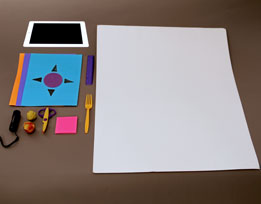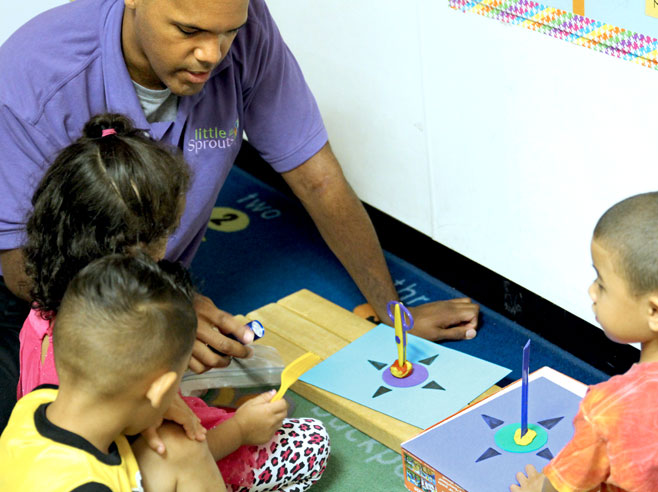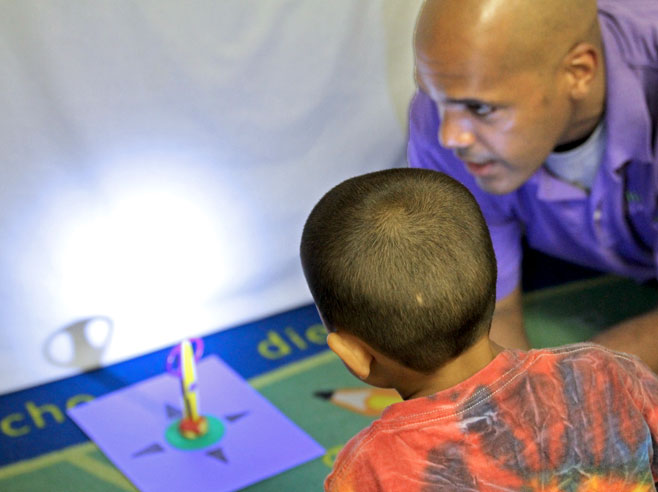Children explore rotation and changing shadow shapes through hands-on experiences.
Materials

- An object for each child that will cast different shadow shapes as it is rotated, such as a food container lid, a comb, a sticky pad, a roll of masking tape, a plastic fork, a ruler, a pair of preschool scissors
- Large white cardboard sheet (or white tri-fold display board) to use as a shadow surface wall (1 for each Rotation Station)
- LED flashlights (1 for each Rotation Station)
- Mystery Shadows tool in the digital Shadows Journal on 1 iPad
- Play dough, for making a base for each object
- Rotation Station mats from the Shadows Changing Shape activity (1 mat for each pair or small group)
Preparation
- Stand each object upright in a play dough base.
- Use the Rotation Station Mats from the Shadows Changing Shape activity. (Or follow directions in that activity to create new mats.)
- Set up Rotation Stations. Place the mat, flashlight, and a white “shadow wall” so that the shadow of an object placed on each mat can be cast on a shadow wall.
- Darken the area where you will meet with your small groups, so that shadows made with flashlights can be clearly seen.
Directions: Lesson 9
Guided Small Group
- Provide each group (or pair of children) with a Rotation Station mat and an object in a play dough base. Have children place the object on the Rotation Station circle and explore making different shadow shapes by rotating their object.
- After some open exploration, give directions. Children can compare the shadow their object makes with the shadows their classmates are making with other objects. Possible discussion ideas:
- Make the widest shadow you can make with your object.
- Make the thinnest shadow you can make with your object.
- Show the shadow that you think looks the most like your object. Why do you think that shadow looks most like the object?
- Let children exchange their object for a different one. Repeat the activity with the new object.
- Point out the shadow of a (round container lid). Ask a child to slowly rotate the lid, making the shadow become wider and thinner. Lead the group in chanting, Thinner, thinner, thinner . . . until the shadow becomes a thin line. Then chant, Wider, wider, wider . . . as the child continues to turn the round lid.
- Invite children to use the Mystery Shadows tool in the digital Shadows Journal to take a pair of photos: their object casting a thin or wide shadow, and then just the shadow. It may be useful for two children to work together in taking a photo: one to hold the iPad to frame the photo and the other to tap the button to take the photo. See Mystery Shadows Photos for a review of this app.
Children can play the Mystery Shadows game with these additional photos at later Learning Centers.


